commentary Commentary
Commentary: Mind the varied impact of HDB schemes on different groups of home owners
While the HDB schemes that seek to address the issue of expiring leases and depreciating value are to be welcomed, policymakers will do well to review the potential impact on lower-income families, says one housing expert.
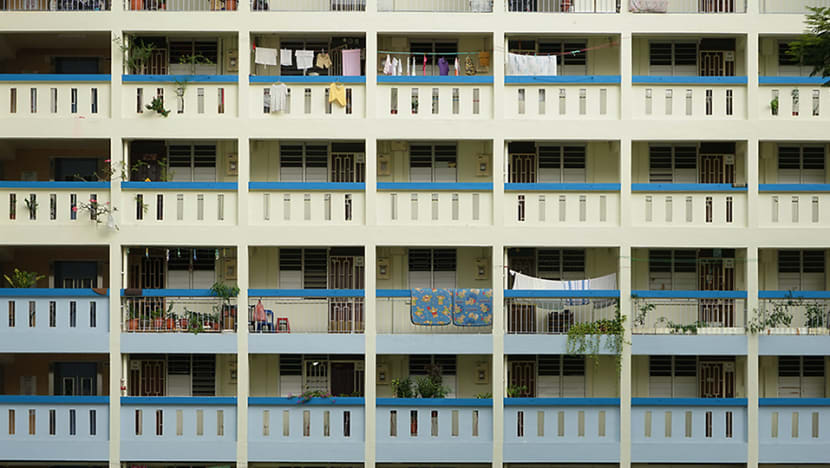
A block of flats in Singapore. (Photo: Marcus Mark Ramos)
SINGAPORE: Almost 60 years since the Housing Development Board (HDB) was established, a new concern has arisen – expiring leases of old HDB flats.
While most flats in Singapore have a remaining lease of at least 60 years, many home owners are concerned that the value of their flat will depreciate over time, trapping and eroding the equity in them.
Concerns over depreciating values have been further expressed by prospective homebuyers over the past year, with many who view the range of impacted flats to be those with less than 50 years left on their leases, to even homes that have leases of more than 60 years left.
The possibility of many shunning HDB flats with shorter leases arise from concerns that current homebuyers may not be able to sell their units in an extreme scenario after the minimum occupation period is over.
READ: Strong political commitment to housing is precisely what younger Singaporeans need, a commentary
TOWNS MOST IMPACTED
The impact of expiring leases can be expected to hit first- and second-generation satellite towns first and foremost, including Bukit Merah, Queenstown, Geylang and Toa Payoh, which have a large number of units with less than 50 years of lease remaining.
Following on, other towns set to be affected include Ang Mo Kio, Bedok, Kallang Whampoa, Clementi, Jurong West and Marine Parade, which have a significant share of HDB flats that have leases of between 50 and 60 years remaining.
According to HDB’s 2013 Sample Household Survey, these towns also have a higher proportion of elderly residents, a number that is likely to increase as more in the baby boomer generation approach retirement and become less mobile financially and physically.
READ: Windfalls and bailouts should not be an expected part of the public housing equation, a commentary

LESS OF A WORRY IN THE PAST
Interestingly, the impact of the expiring leases was a lesser worry in the past. In Toa Payoh, prices of HDB flats with expiring leases moved in tandem with the rest of the market.
Prices for these flats were also supported, among other reasons, as both homebuyers and sellers perceived such older flats to be likely candidates for selection for redevelopment under the Selective En bloc Redevelopment Scheme (SERS).
Under SERS, residents in selected older housing estates have the opportunity to move to a new home with a fresh 99-year lease, as well as receive a package comprising compensation and rehousing benefits.
The differences in prices of HDB flats between those with leases of less than 60 years remaining, and those with more than 60 years left, only emerged in 2015.
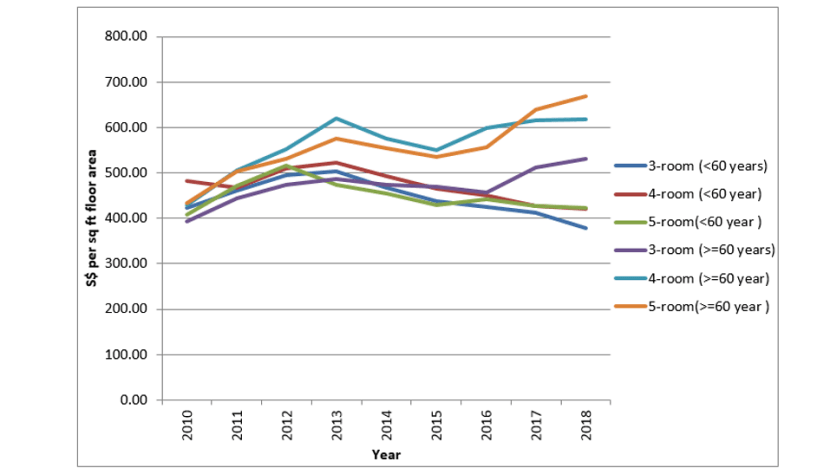
One of the possible reasons for the divergence could be due to prospective buyers gravitating to flats of longer tenure under weaker market conditions, as they become more discerning.
It is also possible that it reflected lagged effects from concerns when then National Development Minister Khaw Boon Wan broached the topic in 2013 and 2014.
Since then, HDB flats with more than 60-year leases in Toa Payoh started appreciating, while prices of older flats continued to descend.
OLDER FLATS DEPRECIATING IN VALUE
When a Facebook post in March 2017 by the Minister of National Development Lawrence Wong expounded that not all aged flats will undergo SERS, more prospective buyers began avoiding older flats.
The average unit price of 3-room HDB flats with less than 60 years of lease transacted at 8.5 per cent lower in the first seven months of 2018, compared to the average unit price of an equivalent flat that transacted in 2017.
In contrast, prices of 3-room HDB flats with more than 60 years remaining on their leases rose by 3.6 per cent, over the same period.
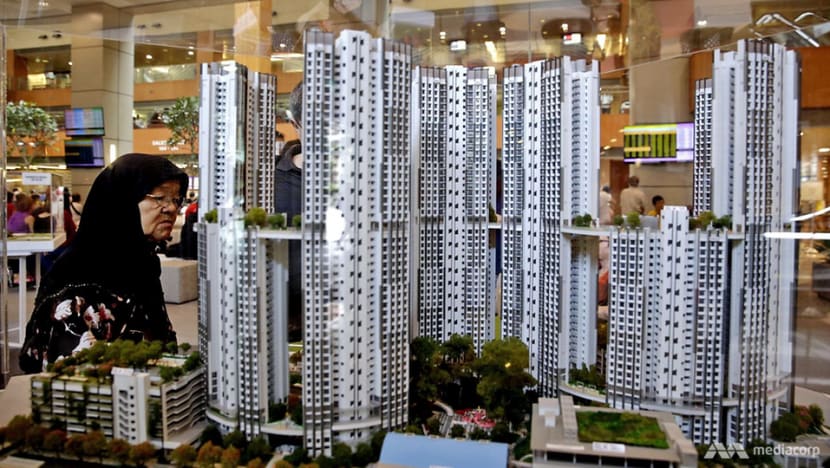
The depreciating prices of old flats are most keenly felt in the 3-room HDB market segment, where home owners are also more vulnerable, on average.
The depreciating value of such flats with expiring leases will mean a potential contraction in wealth for home owners, who may also face greater difficulty in the extraction of housing equity if money is needed urgently.
When comparing the average unit price of 3-room HDB flats in established estates, these price trends have been largely consistent.
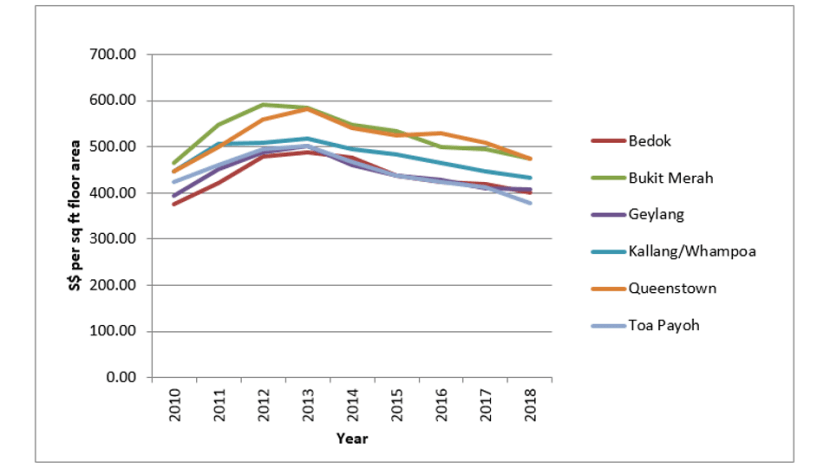
Due to the lack of controls in this basic comparison, the declining price trend for 3-room HDB flats could be due to a self-selection bias, whereby buyers have been purchasing units in older conditions at lower prices, or as a result of the expiring lease effect.
Notwithstanding, both assumptions have longer standing social implications.
First, with aspirations of upgrading or intentions to move closer to family, many flat owners are unlikely to live for longer periods in their Build-to-Order HDB flats and will likely start planning to move out after hitting the minimum occupation period.
Building community spirit within the precinct will be tough, as people uphold physical mobility and the ability to move if necessary, when it comes to housing.
READ: A tale of one HDB flat across two generations, a commentary
Second, low-income households who can only afford older but cheaper flats will find it harder to monetise their flats when they need to cash out.
But with the new measures announced at National Day Rally, HDB home owners should expect a lower chance of their homes depreciating linearly over time, and can look forward to an avenue to monetise their properties, despite the older leases.
The new policies will also help slow down the physical obsolescence of flats that have less than 60 years of lease remaining - good news for older home owners who lack the financial and physical ability to move out.
MIND THE IMPACT OF SCHEMES ON VARIOUS GROUPS
Notwithstanding, the devil is in the details, and the Government will have to determine how these new policies should be implemented.
For the Voluntary Early Redevelopment Scheme (VERS), besides deciding on the level of home owners’ consensus and the corresponding compensation package, the scheme should bear in mind that some home owners may also be more affected than others, in particular those who may have to pay sellers’ stamp duties and a resale levy if VERS occurs shortly after they purchase an impacted home.
Should these home owners be further compensated if VERS pays out less than market value for these homes? If they make up a significant number, how else would the Government intervene to prevent these sellers from voting “no” and holding the other residents hostage?
As some of such HDB home owners belong to the low- or lower end of the middle-income group, having to fork out an extra sum offhand may also impose financial difficulties on them.
Additionally, home owners who are retired and do not have much capital may have difficulty getting a new flat of similar size to their current home, due to financing regulations.
READ: Many ways to make a house a home but no easy fixes to housing vulnerable families, a commentary
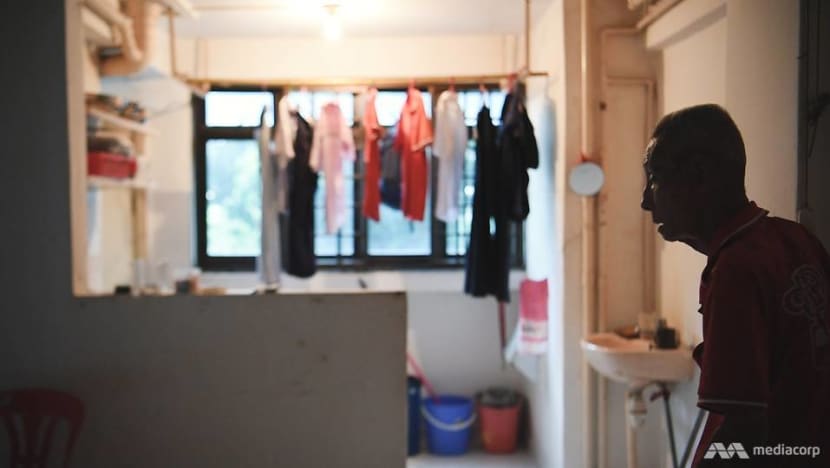
For the expanded Home Improvement Programme (HIP II), ongoing improvement works mean that those working will have to either allocate days of leave to oversee contractors or risk leaving their doors open with no one at home.
While the process for improvement works have been largely streamlined, the monitoring time required will still place a strain on low-income households, who likely work longer hours and have fewer leave days available.
READ: What a ‘Housing Redevelopment Board’ will do for mature estates, a commentary
Despite uncertainty on how VERS and HIP II will play out, both may be the most important housing policies introduced in modern day Singapore.
While the new policies may not appeal to all, and there are many ifs and buts along the way that must to be untangled, it is a step towards ensuring Singapore’s housing programme remains sustainable, and our future generations have access to quality, affordable housing.
Lee Nai Jia is senior director and head of research at Knight Frank Singapore.












